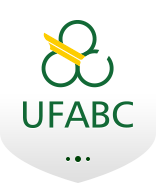Banca de DEFESA: ALEXANDER LUCAS BUSSE
Uma banca de DEFESA de DOUTORADO foi cadastrada pelo programa.DISCENTE : ALEXANDER LUCAS BUSSE
DATA : 14/12/2020
HORA: 14:00
LOCAL: Sessão de defesa remota
TÍTULO:
Classification and Dedication of Structures, Systems and Components for Nuclear Research Reactors
PÁGINAS: 192
GRANDE ÁREA: Engenharias
ÁREA: Engenharia Nuclear
SUBÁREA: Tecnologia dos Reatores
ESPECIALIDADE: Instrumentação para Operação e Controle de Reatores
RESUMO:
The most important safety principle for a nuclear reactor is the ability to shut down and maintain the nuclear plant in a safe condition even after a postulated design accident has occurred. It is based on this principle that all functions are categorized according to their relevance to reactor safety. In sequence, all Structures, Systems and Components (SSCs) of the nuclear plant must be properly classified following a clear and objective method that allows correlation with technical and quality standards to ensure the availability of safety functions. Many countries, including Brazil, do not have clear regulations that determine the criteria and discriminate the search reactor classification process. The lack of clear research reactor regulation requires nuclear facility design companies to classify SSCs using power reactor regulation. However, given the unique characteristics of research reactors, safety requirements may not necessarily be the same as those applied to nuclear power reactors. This makes the approach adopted technically conservative, usually oversized and costly. This work has two purposes: a) present an objective method to perform safety classification of SSCs in nuclear research reactors. b) investigate the possibility to use the dedication approach (use of commercial items to perform safety functions) in research reactors following the experience acquired by the power reactor operators in this matter. Initially, a classification method is proposed that complies with current national regulations and is in line with the latest safety and classification guidelines for SSCs from international licensing agencies. Subsequently, a probabilistic safety investigation is carried out in a nuclear research reactor of the pool type to demonstrate the intrinsic safety and the wide functional availability for shutting down the reactor. Thus, the use of the proposed method could be used immediately in national projects, with cost reductions of around 80% compared to the traditionally applied methods for qualifying SSCs.
MEMBROS DA BANCA:
Presidente - Interno ao Programa - 6670680 - JOAO MANOEL LOSADA MOREIRA
Membro Titular - Examinador(a) Interno ao Programa - 670232 - JOSE RUBENS MAIORINO
Membro Titular - Examinador(a) Externo ao Programa - 2263681 - PEDRO CARLOS RUSSO ROSSI
Membro Titular - Examinador(a) Externo à Instituição - Jorge Alexandre Onoda
Membro Titular - Examinador(a) Externo à Instituição - HUMBERTO VITOR SOARES
Membro Suplente - Examinador(a) Interno ao Programa - 1545354 - RICARDO CANELOI DOS SANTOS
Membro Suplente - Examinador(a) Externo à Instituição - Roberto Longo Freitas - IPEN




